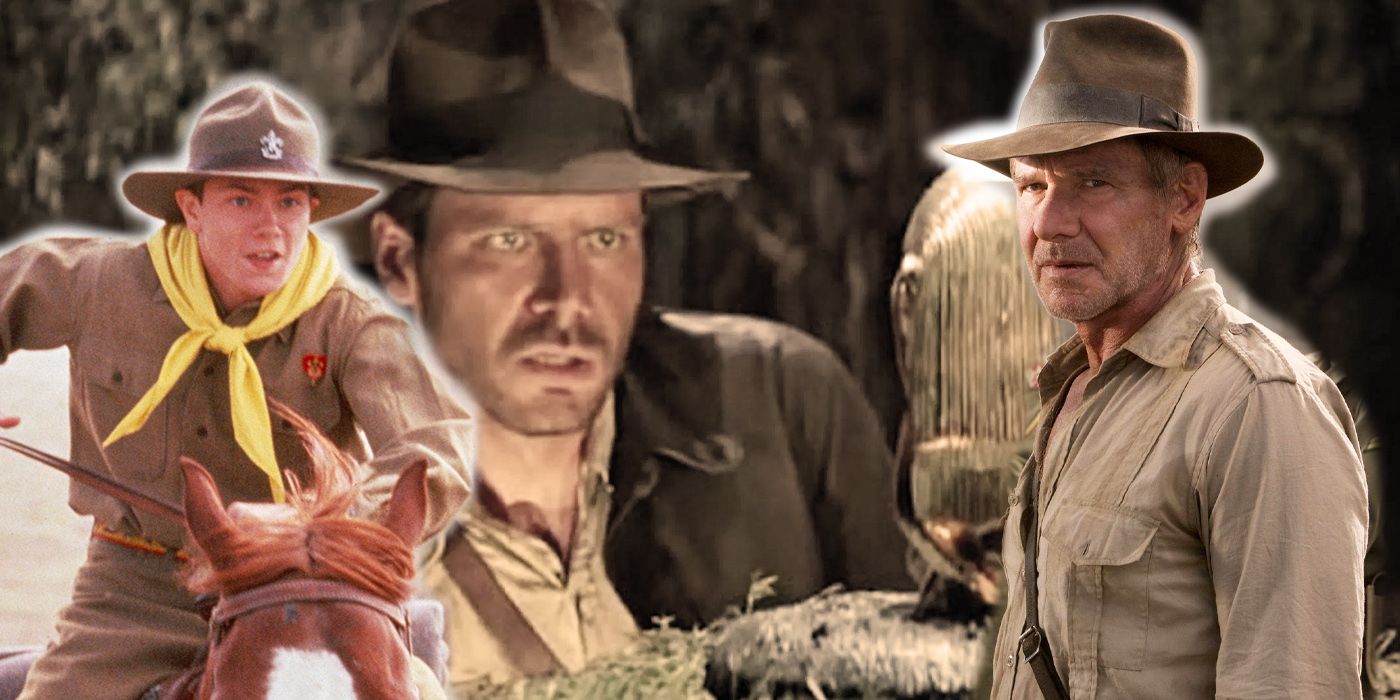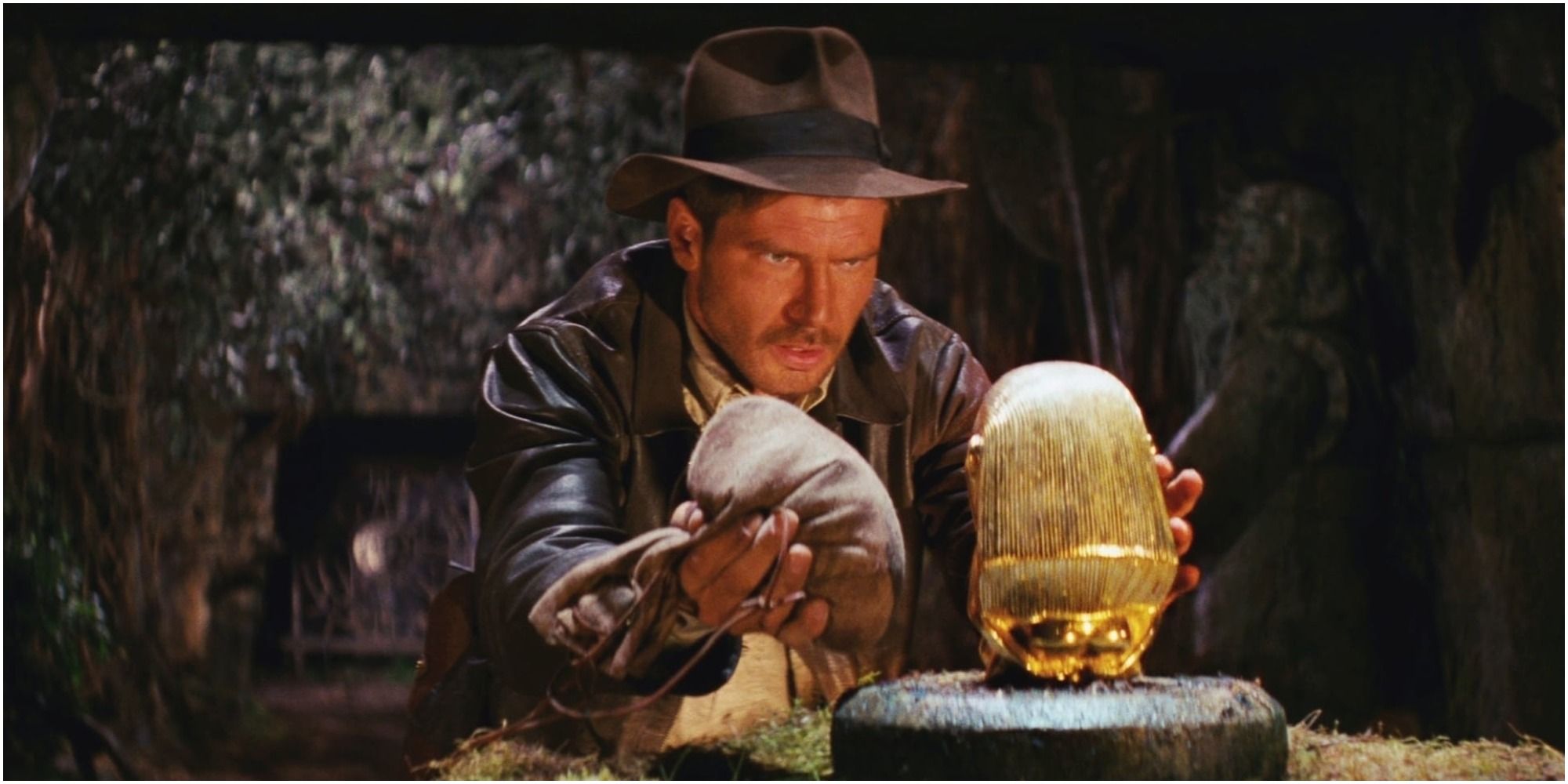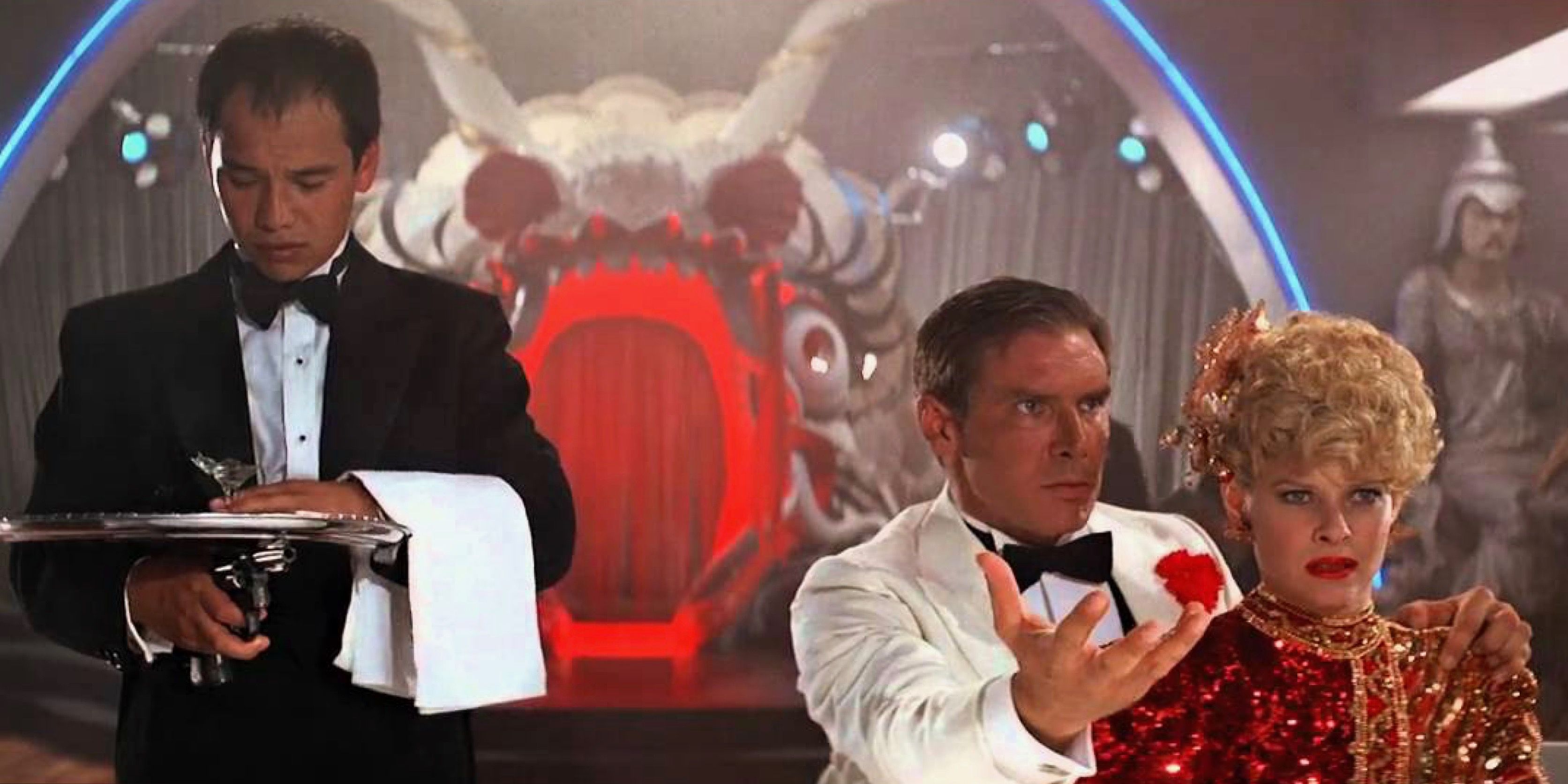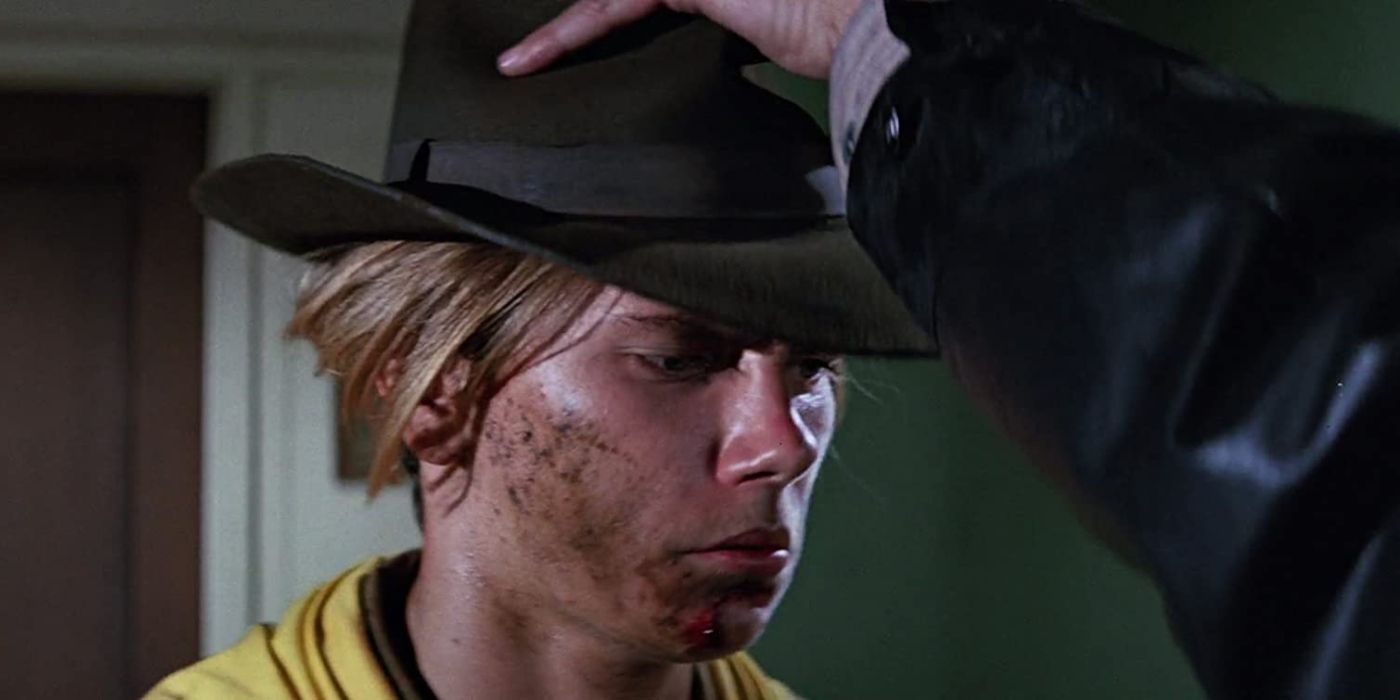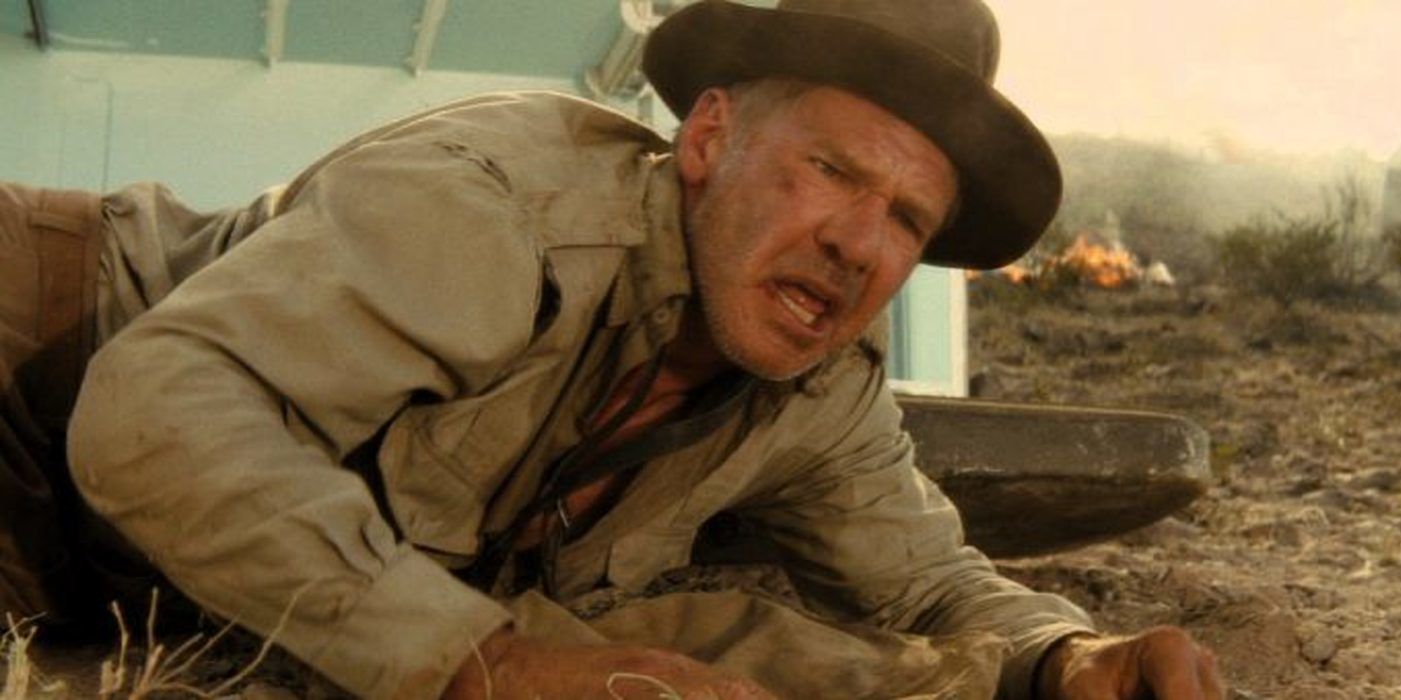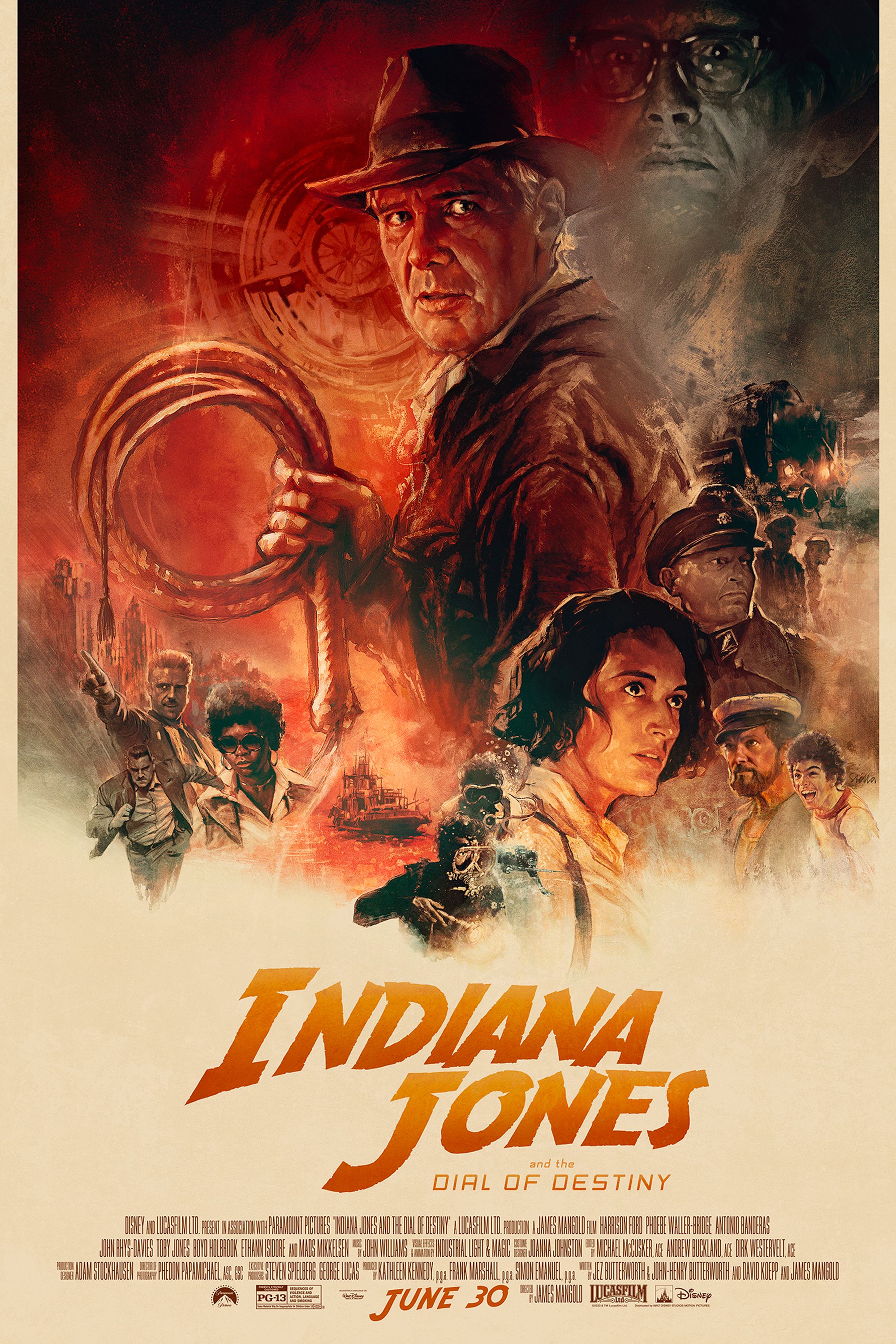Exploring how and why each Indiana Jones opening is different not only sheds some important light on Harrison Ford’s fedora-wearing hero, but it also provides a more rounded perspective of the acclaimed series. From its early origins as the brainchild of George Lucas, Indiana Jones has taken on a life of his own. Fans around the world have been riveted by the globe-trotting, Nazi-battling archaeologist since he first survived a lethal obstacle course in 1981’s Raiders of the Lost Ark, and each successive installment has only served to deepen our intrigue.
The opening sequence of each Indiana Jones film to date may not necessarily provide context for the story that will unfold in the film, but it does lock audiences in at once to the character’s high-octane world. It’s difficult to imagine just what an Indiana Jones film would be like without its trademark opening, but one thing is clear: no film in the series would be the same without one. More than just a creative way to start each film, the opening sequences have always been a product of Steven Spielberg’s vision and as such, impart a sort of continuity, regardless of how different (or absurd) each one might be. For an Indiana Jones fan, those initial moments as the credits roll and we are reunited with Dr. Jones are confirmation of great things to come. The tension becomes palpable, the setting and set pieces exotic.
On the surface these sequences may seem like random events in the life of Indiana Jones, as he travels the world in search of his next artifact, and Spielberg has quite likely always been striving for a balance between entertainment and depth with Indiana Jones, which he achieves with each film's opening. But how and why each of the four openings differ requires a certain amount of exploration in order to see the bigger picture that ultimately unites them all.
Raiders of the Lost Ark
As the first film in what would go on to be a blockbuster franchise, Raiders needed to give off an impression of Indiana Jones that was immediately intriguing. Largely regarded by many fans and critics as the best film in the series, Spielberg wasted no time in showing us a man unencumbered by the restraints of civilization. Jones is in the jungle, and he ventures deeper toward his destination.
Once inside an ancient cavern, his character is further revealed. It takes time to recognize his courage, as the booby-trapped and obstacle-lined dangers of the cavern gradually reveal themselves. He doesn’t so much as flinch when dealing with armies of tarantulas (unlike his companion) and is clearly knowledgeable, pushing onward into something that audiences can quickly identify as ominous. By the time he prepares to remove the golden idol, audiences are assured that this is a man who has done his homework about just what sort of challenges he would be facing.
Of course, everything doesn’t go to plan, and this is Spielberg’s way of showing us how Indiana Jones operates under pressure. It’s tense, thrilling, and frightening all rolled into one, as Jones escapes the cavern only to give up the idol to a rival. The subsequent chase through the jungle by an Indigenous tribe intent on killing him culminates in a narrow escape for Jones. But as he’s airlifted from the jungle, Spielberg takes one last opportunity to establish one of Jones’ few weaknesses. Though fearless in many instances, the daring archaeologist is deathly afraid of snakes. Indiana Jones might take a questionable moral stance on the pursuit of artifacts, but he is also unlike any other character that cinema goers have seen before. The foundation has been built.
Indiana Jones and the Temple of Doom
Three years after the highly successful introduction to Indiana Jones in Raiders of the Lost Ark, the character returned in Indiana Jones and the Temple of Doom. As fans were already familiar by this point with Jones’ traits, Spielberg established there was more to him than simply being a rugged archaeologist/adventurer whose time away from the classroom was spent in far flung jungles or sun-soaked deserts. In order to do this, Jones was shown as a sophisticated academic whose dusty fedora and sweat stained khakis could be traded in for a tuxedo and champagne in a ritzy Shanghai supper club. The character seemed perfectly at home in this environment, allowing audiences to further comprehend the extent of the work that Jones did when he wasn’t in the classroom. It wasn’t always about death-defying risk, there was also room for plenty of negotiation and even a certain degree of schmoozing in Jones’ world. Here, Spielberg is rounding the character more than ever, switching gears on what Raiders of the Lost Ark showed in order to build something all the more substantial.
And yet, at the same time, it was also important to show that the threats to Jones’ line of work weren’t necessarily always obvious ones. Something as seemingly innocuous as a sip of champagne could mean death, and the refined supper club, with its dancers, elegant clientele, and orchestra could be transformed in the blink of an eye into something far more sinister. As Jones struggles to regain the antidote to the poison he has unwittingly drunk, he faces a wild and lethal scene, complete with machine guns and fist fights. The point has been made: wherever Jones goes, there is potential for danger, even in the more elegant and polished aspects of his world.
Indiana Jones and the Last Crusade
For this third entry in the series, Spielberg took things back to the beginning. Young Indiana Jones, played by River Phoenix, is a curious and headstrong teen boy scout, determined to prevent common criminals from taking an artifact for profit. The sequence reveals Jones' background and upbringing with his preoccupied and inattentive father, Henry. The film’s opening has several other additional purposes, including providing insight into how Jones came to favor the use of a bullwhip, and how learning to use the weapon gave the character the scar on his chin (a real-life scar that Ford gained from a car accident prior to his acting career). It also reveals how Jones’ snake phobia came into existence, having fallen into a crate filled with the creatures while being pursued by criminals aboard a circus cargo train. The audience watches as a young Indiana Jones undergoes much of the same sort of action that will define his later life, even discovering that his trademark fedora came from the very criminal he was pursuing.
When the sequence switches to Jones’ adult years, he is still in pursuit of the same artifact from the same villain. Uncompromising in his intent to have the treasure placed in a museum, the opening is a thorough representation of the determination and dedication that thrives at the core of everything the character does. Having given viewers two different points of view of Jones in the Raiders and Temple of Doom openings, Spielberg now focuses on why the hero is who is, as well as the moral fiber that grounds him. In the past, it may have at times seemed ambiguous as to why Jones pursued some of the treasures he pursued, but here it’s made clear once and for all that more than fortune or glory, he values protecting ancient relics and that neither the passage of time nor daunting odds will stop him. In case it wasn’t clear through numerous death-defying moments, The Last Crusade assures us all that Indiana Jones was born to be one of the most popular film heroes.
Indiana Jones and the Kingdom of the Crystal Skull
Though Kingdom of the Crystal Skull is quite often derided, its opening does provide some important insight into Jones' life. By this point, fans have watched and learned so much about the character that a deep familiarity with everything Jones says and does exists. However, as Crystal Skull is set nineteen years after the events of Last Crusade, it was finally time for Spielberg to show audiences how Jones has aged. This in itself is a big part of the divisive nature of the film, with many fans arguing that it wasn’t necessary to see how Jones gets on in his later years. But despite this argument, it only makes sense that if the films showed the character as a child and an adult, then they should also include how his often chaotic life has been affected by his senior years.
Early in the opening sequence, Jones - though heroic throughout the franchise - is clearly not immune to the trappings of age. This is perhaps best emphasised by the nearly five-minute wait the audience faces until he’s at last revealed on screen. When he does make an appearance, it is as a prisoner of Russian agents. It marks the first time that an Indiana Jones films begins with Jones as a prisoner – a sign that perhaps his adventurousness and death-defying abilities have begun to slow over the years since he last appeared on screen. Forced to help the Russians find a mysterious crate in a top secret US military base, Jones is ultimately betrayed by his good friend Mack – yet another indication that nothing lasts forever and that a career as high risk and extensive as Jones’ is bound to face deterioration. At the same time though, Jones can still make good use of his skills. Granted, hiding in a lead-lined refrigerator in order to avoid a nuclear blast is downright zany, but it's perhaps the quickest way to prove to viewers that while times may change and he may age, Indiana Jones is still able to come out on top of even the most dire situations.

